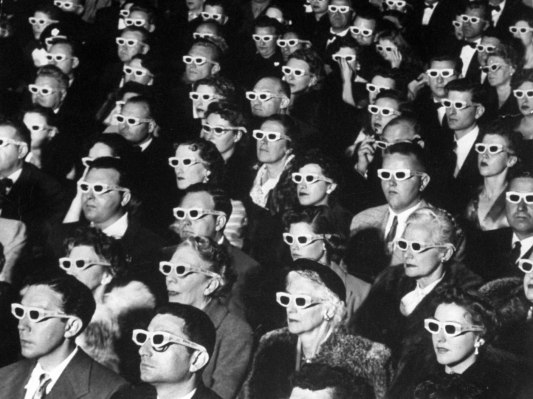In the mid-2000s, everyone was talking about 3D, the “next big thing” in video that would transform the way we consumed TV and movies, even how we communicated. It required people to buy expensive new gadgets and wear goofy eyewear, but we were told that consumers would flock to this new three-dimensional world.
Unless you’re James Cameron, the Hollywood director whose movies have made billions of dollars thanks to that technology, you likely missed the entire 3D revolution.
So perhaps we should look at the new “next big thing” in video, virtual reality (which also requires people to buy new gadgets and wear goofy eyewear), with a more skeptical eye. However, comparing the two technologies and, perhaps most importantly, the ecosystems coming up around them, it appears VR>3D — and it’s not because of Pokémon Go (well, not just because of it).
For a new technology like VR to take off, generally four factors need to be met:
Multiple uses. VR videos are by no means the only application for consumers. There are applications in gaming, communications, healthcare, education and more. VR also enjoys many industrial uses, including the ability for executives to take an immersive tour of a manufacturing facility from thousands of miles away. VR also is a fertile area for marketing and advertising. OnePlus, the Chinese mobile device maker with a cult-like following, broadcast its recent launch event in VR. It didn’t matter that there were some technical glitches: In a couple of years, even Apple’s vaunted launch events will become VR experiences for remote viewers.
Diverse, high-quality content. VR has started to create an important balance of content developed by traditional providers (TV/movies, media, social media) and at-home users. This critical mass of professional and amateur will attract more consumers, many of whom will create their own VR content. While the content is not quite there yet, it is certainly on the upswing: VR content startup Jaunt has received funding from Disney and other Hollywood players, and fairly soon YouTube could be dominated by VR videos submitted by everyday users.
Falling device prices. Just a few years ago, VR cameras were prohibitively expensive for most consumers. But recent entries to the market, including the Samsung 360, allow consumers to film their own VR content for less than $400. What’s more, all one needs is a pair of cheap cardboard glasses and a smartphone app to start the VR experience.
Budding startup ecosystem. Many small, innovative companies are popping up to help drive VR growth. While the returns won’t be immediate for investors, venture capitalists haven’t been shy about spreading the love to all types of VR startups.
3D, on the other hand, fell short in all of these areas: Beyond movies and television, there weren’t really any broad uses for 3D, including mobile; 3D TVs started expensive and never got cheaper; content, created by traditional content providers or at-home users, never materialized; and the big players, particularly TV manufacturers, dominated the market.
The “wow factor” will also help VR succeed. I have witnessed more than a dozen people try VR for the first time, and each one was blown away by the experience. That just wasn’t the case with 3D, even with the latest breakthroughs showcased at tech conferences like CES International.
Consumers want a personalized experience they can control.
VR has the potential to upend nearly every sector of the economy, perhaps acting as a lifeline for drowning ones. Last year, The New York Times included a Google Cardboard, a VR viewer, with Sunday home deliveries. Subscribers could then download an app to enable their smartphone to display the Times’ VR video content through the Cardboard. The Times’ foray into this new technology was surprisingly good and easy to use, allowing readers to engage with the news on an unprecedented level.
The biggest reason we should all be bullish on VR is its potential for integration in social media, especially mobile. Facebook is making a big play in VR through its purchase of Oculus and the recent launch of Facebook 360. Much like Facebook pioneered social media and was the major driver of the mobile internet, the company is looking to beat competitors to the broad market and deliver VR to its 1.6 billion active users worldwide. Facebook users will, in turn, contribute greatly to the development of VR content, further driving growth.
Finally, VR provides the opportunity for a truly personalized media experience — for both user and industry-created content. As the swarms of real-life people trailing behind their phones in search of augmented reality cartoon creatures have shown, first-person video games put you right in the action. Watching a VR movie can become a different experience at each viewing, creating the movie you choose and not the one dictated by filmmakers.
This creative disruption will shake the established interests, as evidenced by Steven Spielberg recently calling VR movies “dangerous” because viewers can decide “not to take direction from the storytellers.”
As we’ve seen through the success of Airbnb and Uber, and in the growth of social media, consumers want a personalized experience they can control — and one that allows them to step out of their daily lives. Beyond all the promising business indicators, that cultural phenomenon may be the most important sign that VR is here to stay.
